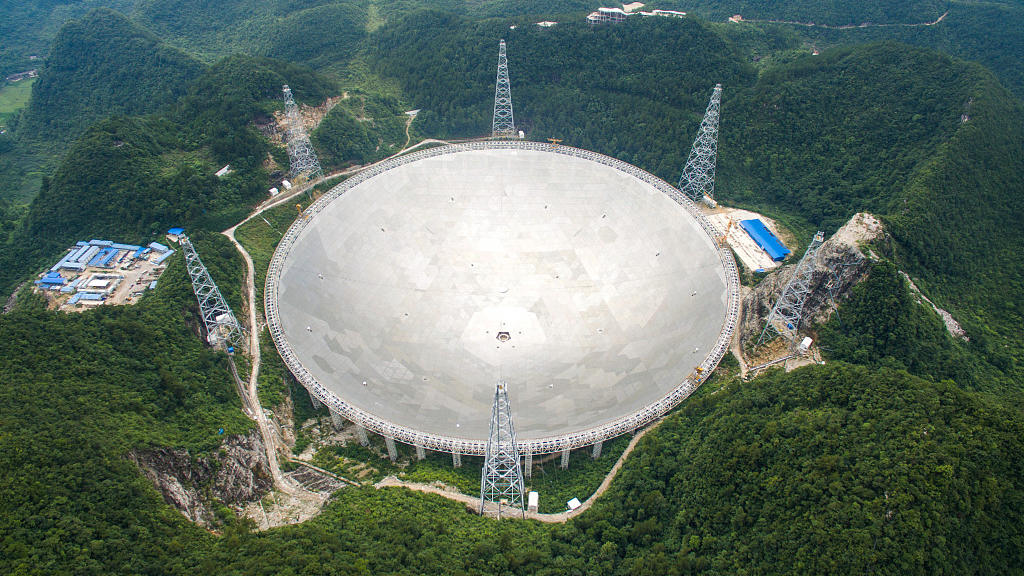
The 500-meter Aperture Spherical Radio Telescope in Pingtang County, Guizhou Province, China. /CFP
The 500-meter Aperture Spherical Radio Telescope in Pingtang County, Guizhou Province, China. /CFP
Chinese scientists have taken high-definition images of the Milky Way's gas medium using the world's largest single-dish telescope FAST (Five hundred meter Aperture Spherical Telescope), according to an article published on Science China on Saturday.
Their studies have revealed the mysteries of the birth to death of hidden stars in interstellar space from multiple perspectives, and helped aid the understanding of the birth of celestial bodies in the Milky Way and the material cycle in interstellar space.
The team from the National Astronomical Observatories of the Chinese Academy of Sciences, led by Han Jinlin, processed data from about 44,000 radio spectral lines and obtained the distribution structure of hydrogen atom gas and the diffuse characteristics of ionized gas in the Milky Way, with the highest sensitivity and clarity in the world.
The team also used pulsars to detect the largest range of magnetic field features in the Milky Way so far, scanned an area of the Milky Way with the FAST, and newly identified the remnants of two supernova explosions.

The distribution map of the interstellar hydrogen atom gas revealed by FAST. /National Astronomical Observatories of the Chinese Academy of Sciences
The distribution map of the interstellar hydrogen atom gas revealed by FAST. /National Astronomical Observatories of the Chinese Academy of Sciences

The distribution map of ionized gas in the interstellar space of the Milky Way revealed by FAST. /National Astronomical Observatories of the Chinese Academy of Sciences
The distribution map of ionized gas in the interstellar space of the Milky Way revealed by FAST. /National Astronomical Observatories of the Chinese Academy of Sciences
The gas of hydrogen atoms permeating the vast interstellar space can form hydrogen molecular clouds after converging and cooling, and a new generation of stars can be bred in the high-density core. Newborn stars ionize the surrounding gas, according to Han.
Stars evolve from birth to death and finally explode after they die, and scatter the synthesized gas and elements into interstellar space. Some of these stars will produce supernova remnants and pulsars after they die, he said.
Using the newly observed data, researchers will make new explorations in the structure of the Milky Way, discover the structure of the distant ionized gas and atomic gas in the Milky Way, and conduct in-depth studies on the physical characteristics of these gases forming stars and surrounding ionization.
In October, FAST discovered the biggest atomic cloud in the universe by far, which is 20 times larger than our Milky Way galaxy.